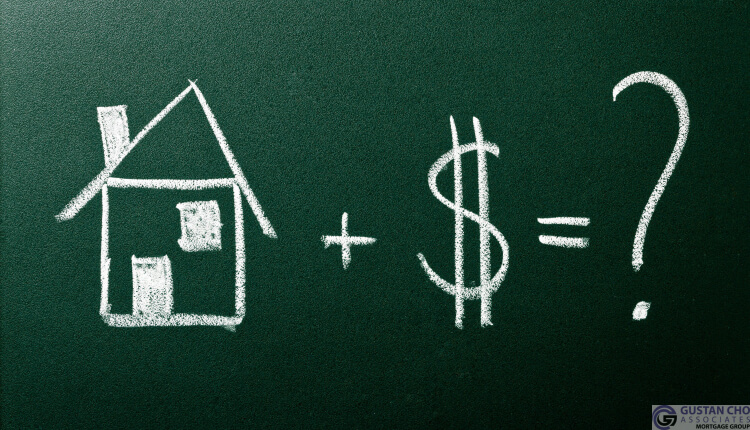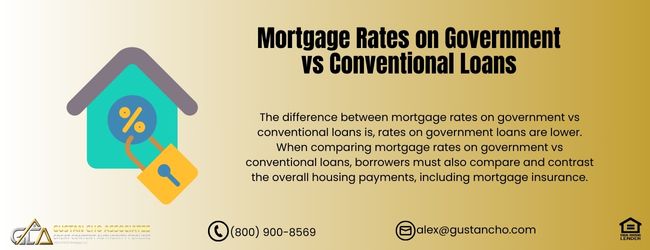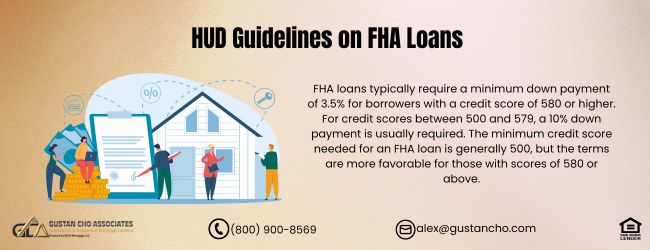HUD Down Payment Guidelines on FHA Loans

This guide covers HUD down payment guidelines on FHA loans. The Federal Housing Administration (FHA), a government agency under the United States Department of Housing and Urban Development (HUD), insures mortgage lenders against mortgage loan borrower defaults in the United States. Dale Elenteny, a senior mortgage loan officer at GCA Forums Mortgage Group, says the following about HUD down payment guidelines on FHA loans:
For FHA to insure and guarantee borrowers defaulting on their FHA loans, lenders must follow HUD mortgage lending guidelines. HUD, the parent of FHA, sets the HUD down payment guidelines for FHA loans. Otherwise, FHA will not insure the mortgage lender against default on an FHA loan.
A home buyer can qualify for an FHA loan with as little as a 3.5% down payment, less than perfect credit, and high debt-to-income ratios. This article will discuss and cover FHA loan limit increases due to rising home prices. The following paragraphs will cover HUD down payment guidelines on FHA loans.
HUD Down Payment Guidelines vs Minimum Credit Score Requirements
The minimum credit score required to qualify for an FHA-insured mortgage loan with a 3.5% down payment is 580. Borrowers with credit scores between 500 and 579 can also qualify for an FHA home loan. However, a 10% down payment is required. For any borrower with a credit score under 620, here are the DTI AUS Approval Requirements: The maximum debt-to-income ratio is normally 43% to get approval/eligibility per the Automated Underwriting System. If credit scores exceed 620, debt-to-income ratios over 46.9% front-end and 56.9% back-end are normally allowed to get AUS approval. These DTIs can increase with compensating factors AUS recognizes, such as substantial reserves. Homebuyers can qualify for an FHA loan after the following:
- A two-year waiting period after the discharge date of Chapter 7 bankruptcy.
- Three years after the recorded foreclosure date, the deed was issued instead of foreclosure.
- Three years after a short sale reflected on the HUD’s settlement statement.
HUD Down Payment Guidelines on FHA Loans
HUD down payment guidelines on FHA loans require a 3.5% down payment for borrowers with a 580 credit score. HUD down payment guidelines for borrowers with credit scores between 500 and 579 require a 10% down payment. Buyers can also qualify for an FHA loan with outstanding collection accounts:
- Do not pay them off as well as charged-off accounts
- However, most lenders want to see timely payments for the past 12 months
- One of two late payments in the past 12 months is not a deal killer
- But it is frowned upon by AUS and lenders
- Overdrafts in the past 12 months can be deal killers
The mortgage loan originator should not be applying, processing, and underwriting if they notice overdrafts in bank statements.
Ready to Buy a Home with an FHA Loan? Learn About HUD Down Payment Guidelines!
Contact us today to understand the down payment requirements and get pre-approved for your FHA loan.
HUD Loan Limits on FHA Loans
HUD has released the FHA loan limits.
- FHA Loan Limits for 2025 are $524,255
- For high-cost areas like most parts of California, the FHA Loan Limit is capped at $1,209,550 for single-family homes.
- For other parts of the country considered low-cost areas, the FHA loan limits have increased to $524,255.
How Does HUD Calculate Loan Limits?
The Federal Housing Administration recalculates the FHA loan limits every year. The FHA Loan Limits are calculated based on the percentage figures of the country’s conforming lending limit. Based on the conforming lending limits, the Federal Housing Administration’s minimum national lending limit is 65% of the country’s conforming lending limit. The floor of the lending limits is an area where 115% of a home’s median price is valued at less than 65% of the country’s conforming lending limit.
Loan Limits In High-Cost Areas
Areas considered high-cost by the Federal Housing Administration are parts of the country where the lending limit surpasses the floor.
- The highest FHA lending limit cap is set at 150% of the country’s conforming limit
- In regions with the highest values of homes, where 115% of the home median price surpasses 150% of the conforming lending limit, the maximum lending limit will stay at 150% of the conforming lending limit
FHA Loan Limit On Reverse Mortgages
HUD has announced FHA loan limits on HECM reverse mortgage loans of $679,650 in higher loan amount areas. The current FHA loan limit on HECM is set at $1,209,550. The increase in reverse mortgage loan limits took effect on January 1, 2025, and is effective until December 31, 2025. This effective increase is 150% of the national conforming loan limit of $524,255.
Age Versus Loan Limits On Reverse Mortgages For Seniors
The amount of money a senior can obtain from a reverse mortgage, especially the Home Equity Conversion Mortgage (HECM) program, depends on several factors, including age. Below is a summary of how age affects the limits for reverse mortgages:
Important Details Relating Age To Reverse Mortgage Loan Caps
Minimum Age Criteria:
- The minimum age for HECM reverse mortgages is 62.
- This applies to the youngest borrower or an eligible non-borrowing spouse.
- Proprietary (private) or jumbo reverse mortgages may allow borrowers as young as 55 years in certain states.
- They also provide options for people younger than 62.
No Maximum Age Limit:
- There is no upper age limit for reverse mortgages. Advanced-age borrowers qualify.
- Sometimes, lenders have granted loans to borrowers in their 80s or over a century old.
Age and Loan Amount:
- Advanced age, higher loan thresholds: The older the borrower, the greater the loan amount they are expected to qualify for.
- This is because loans are calculated based on life expectancy, and older borrowers typically have a shorter anticipated loan term, enabling lenders to provide larger amounts.
- A good example is a 72-year-old borrower who usually qualifies for a higher loan than a 62-year-old, all else equal in home value and interest rates.
- The loan-to-value ratio (LTV) improves with age.
- Therefore, older borrowers can borrow more of their home value.
Principal Limit Factors (PLFs):
- For HECM loans, PLFs are employed, which are tables that set the percentage of equity a borrower can access based on age and prevailing interest rates.
- Older borrowers have higher PLFs, which results in more loan amounts.
- Take, for example, a 2025 HECM table.
- There is a clear demonstration that principal limits are increasing with age, e.g., 62-90, thus giving more access to older borrowers.
HUD Down Payment Guidelines and Loan Limits
- For HECM loans, the maximum claim amount in 2025 will be $1,209,750.
- However, the loan amount is determined by the borrower’s age, the home’s value, and interest rates.
- Proprietary reverse mortgages may exceed this limit, particularly for high-value homes, with some offering up to $4 million (e.g., HomeSafe Jumbo Credit Line for borrowers aged 55).
How Younger Spouses Affect Borrowing Limits
For borrowers aged 62 and over, having a spouse under 62 means that the available credit is capped based on the younger spouse’s age. Although the younger spouse can be classified as non-borrowing and reside in the house after the borrower dies, she cannot access any loan proceeds.
Additional Considerations that Impact the Loan Amount
- Home Valuation: The difference between the home’s value as appraised and the HECM lending limit determines the loan’s value.
- Interest Rates: Lowering interest rates increases the loan amount, while higher rates lower it.
- Existing Mortgage Balance: Any existing mortgage must be paid off with the reverse mortgage proceeds, decreasing the net available amount.
- Health and Property Type: Although health is not directly tied to age, it may have some bearing on the calculations, and the property must satisfy the FHA criteria (for example, single-family homes and FHA-approved condos).
Illustrations Of Age Effect
- A 62-year-old may have a home worth $500,000. Utilize an approximate $ 200- 250k loan against the home, receiving 40-50% based on equity and interest rates.
- The same home value for an 80-year-old, accompanied by a shorter life expectancy, would be expected to leverage a higher portion, 60-70% ($ 300- 350k).
- For proprietary loans, a 55-year-old with a home valued over $1 million may leverage it for up to $4 million, but this depends on the lender’s terms.
Practical Issues
- Counseling Requirement: All HECM borrowers must complete HUD counseling, which will explain how age impacts loan amounts and other eligibility criteria.
- Financial Impact: Under 62 years old applying for a reverse mortgage may accelerate equity reduction, restricting funds for later needs or bequeathable assets.
- Borrowers beyond that age may be better off because of higher limits and shorter terms.
- Proprietary vs. HECM: Although proprietary loans have advantages for younger borrowers or those with higher-valued homes, they do not have federal insurance, which may increase costs or risk.
For tailored guidance, contact a HUD-approved reverse mortgage counselor (800-569-4287 or through HUD’s site) or finance specialists to understand how age and other details impact your specific loan options.
- The above illustration shows a 65-year-old reverse mortgage borrower who would be eligible to borrow $524,255 for 2025.
- The maximum claim value for FHA reverse mortgages in high-cost areas is capped at $1,209,550.
- The maximum claim area, MCA, is the lesser of a home appraisal value or the maximum FHA loan limits.
- The MCA is the lesser of a home’s appraised value or the maximum FHA lending limit.
- If a home is appraised at $1,000,000, the maximum FHA loan limits in a high-cost area would be capped at $1,209,550.
- This would be the MCA.
- FHA Reverse Mortgages are Home Equity Conversion Mortgages and are often referred to as HECM
- Reverse mortgages are available only to homeowners at least 62 with home equity.
Alternative Loan Program With Higher Loan Limits
- As mentioned earlier, the Federal Housing Finance Agency (FHFA) and HUD must increase loan limits for two years due to rising home prices.
- All areas in the United States have seen rising home prices.
- Home Buyers who are interested in buying a home that surpasses the FHA Loan Limits in a particular county can see if they can go conventional
- FHFA increased conforming loan limits to $806,500.
- Borrowers who do not qualify for conventional loans can explore non-QM loans without loan limits.
- However, non-QM loans do require 10% to 20% down payments
- Mortgage rates are higher on non-QM loans; however, there is no private mortgage insurance required
- The amount of down payment required depends on the borrowers’ credit scores.
- please contact us at GCA Forums Mortgage Group at 800-900-8569 or text us for a faster response.
- Or email us at gcho@gustancho.com.
Need Help with Your FHA Loan Down Payment? We’ve Got You Covered!
Reach out now to find out how you can qualify with as little as 3.5% down and get started on your home buying journey.
Navigating HUD Down Payment Guidelines for FHA Loans
Homeownership has become a greater reality for many Americans owing to Federal Housing Administration (FHA) loans. These types of loans are sponsored by the Federal Department of Housing and Urban Development (HUD) to assist potential homebuyers, especially first-time buyers, and low-income families. One of the most beneficial factors of an FHA loan is the lower down payment compared to other types of loans. This blog will discuss HUD down payment guidelines for FHA loans, covering eligibility, requirements, critical matters, and suggestions to ease your working journey.
What are FHA Loans?
FHA loans are a type of mortgage available through the Federal Housing Administration (FHA), which is part of HUD. They ensure flexible credit policies, reduced down payments, and attractive interest rates, which benefit the buyer and enhance competition among lenders compared to conventional loans. These loans appeal to first-time homebuyers, individuals with a lower credit score, and people who do not have significant savings.
HUD outlines FHA loan guidelines and governs lenders regarding rules concerning minimum down payment, credit scores, debt-to-service ratios, and more. All lenders providing FHA loans are bound to follow these rules, which promote uniformity and availability for the borrowers.
HUD Down Payment Guidelines: Conditions For FHA Loans
FHA loans are well-known for having a low down payment requirement. In this regard, we’ll review HUD’s policies regarding down payments:
HUD Down Payment Guidelines: Minimum Down Payment: 3.5%
Borrowers with a credit score of 580 or above are permitted to pay a minimum of 3.5% of the home’s purchase price. FHA loan terms are far more accommodating than traditional mortgage loans, which require a down payment of 5%- 20% of the home value. For example, if the home purchase price is $200,000, a 3.5% down payment translates to $7,000.
Greater Down Payment With Poorer Credit Scores
Credit scores between 500 and 579 come with a higher risk, so lenders will often deal with more risk. Under these conditions, a higher down payment must be made. In this case, a 10% down payment is mandatory. Continuing our example, buying a house for $200,000 would incur a $20,000 payment if 10% is put down.
Where Do The Funds For The Down Payment Come From
HUD has certain policies concerning where the funds for down payments can be obtained, including the following:
- Savings: Funds that come from checking or savings accounts.
- Gifts: Funds disbursed by family, close friends, or employers that do not fall under a loan and accompany a gift letter stating no repayment is needed qualify as money gifted.
- Down Payment Assistance Programs: These are state, local, or non-profit entities that assist homebuyers with grants or loans to help manage the down payment amount.
- Retirement Accounts: These include 401(k) or IRA accounts, which can be accessed, though they come with penalties and taxes.
- Sale of Assets: This pertains to the amount received from sales of personal items such as cars or investments.
Note: Personal loans and credit card advances are not accepted for the down payment as they add to the borrower’s existing debt, which counterintuitively increases the borrower’s debt.
No Cash Reserves Required
As with all other types of loans, FHA loans do not require borrowers to have savings set aside post-closing. This allows you to spend almost all your savings on the down payment and closing costs without needing cash reserves post-closing. That said, some savings are helpful for unplanned expenses after buying a home.
Further Criteria For FHA Loans
While a down payment is a major part of the puzzle, FHA loans have certain other eligibility requirements determined by HUD guidelines.
Credit Score Acceptability
Earlier, it was noted that a borrower’s credit score of at least 580 will qualify them for the 3.5% down payment tier. Scores lower than that will result in a 10% down payment requirement, and borrowers with scores below 500 will not qualify for the FHA loans altogether.
Debt-to-Income Ratio
HUD policies generally prefer to maintain a DTI value at or below 43%, though some lenders may go as far as 50% in specific scenarios. Your DTI is the total debt payment (including the value of the new mortgage) divided by gross monthly income.
Property Standards
FHA loans are only applicable for the borrower’s primary residences (1-4 unit properties). The property must comply with HUD’s Minimum Property Standards (MPS), which guarantee safety, soundness, and structural security. An FHA appraisal is mandatory for determining the property’s condition and value.
Mortgage Insurance Requirements
There are two different categories of mortgage insurance required by FHA:
- Upfront Mortgage Insurance Premium (UFMIP): This one-off fee is charged at 1.75% of the loan amount and is typically included in the loan balance.
- Annual Mortgage Insurance Premium (MIP): Monthly payments are made between 0.15% and 0.75% of the loan’s sum, subject to consideration of the loan term, amount, and loan-to-value ratio.
- These premiums cover the lender against default and are essential for FHA loans.
Advantages of FHA Loans for Homebuyers
The low down payment is just one of many advantages of FHA loans. Other benefits include:
- Flexible Credit Requirements: FHA loans are friendlier than conventional loans when it comes to dealing with prior credit difficulties, such as bankruptcies or foreclosures.
- Lower Borrowing Costs: FHA loans tend to have higher interest rates than conventional loans.
- However, because they are government-sponsored, interest rates tend to be lower, leading to a lower overall cost of borrowing.
- Assumable Loans: FHA loans are assumable, which means they can be transferred to a new buyer when you decide to sell your house.
- This could increase the home’s attractiveness in a cutthroat market.
- Down Payment Assistance Compatibility: Many Down payment assistance programs collaborate seamlessly with FHA loans, making them highly advantageous for reducing buyers’ initial costs.
Issues and Factors
Even though FHA loans are a great option for several people, here are some considerations:
- Mortgage Insurance Expenses: UFMIP and FHA MIP incur mortgage insurance liability, making it costly.
- Furthermore, the MIP may be obligated for the entire duration of the loan unless you refinance or increase your down payment substantially.
- Loan Caps: FHA loans have a maximum loan cap that is county-specific.
- As of 2025, the canonical FHA loan limit for a single-family home is USD $524,255 in most areas, with the possibility of high-cost areas exceeding USD 1,209,550.
- Please check HUD’s site for updated limit figures specific to your location.
- Property Requirements: The FHA appraisal process can be more cumbersome compared to conventional loans, which sometimes require undergoing repairs before closing.
Advice for Working Within FHA Guidelines for Second Mortgage Down Payments
To optimize the benefits of an FHA loan and low down payment requirements, take note of the following:
- Verify Your Credit Standing: Improve your credit score to try to qualify for the 3.5% down payment.
- Maintain a positive debt-to-income ratio, timely bill payments, and thoroughly monitor your credit report for inaccuracies.
- Look for Aid with Down Payments: Understand the local and state initiatives that provide some or full funding of down payments through grants or forgivable loans.
- Save Strategically: Even a 3.5% down payment requires strategy.
- Open a new savings account specifically for this goal, and make regular contributions.
- Work with an FHA-Approved Lender: Partner with a lender specializing in FHA loans so you can efficiently navigate the process and follow all necessary HUD protocols.
- Understand Closing Costs: In addition to the down payment, you must pay closing costs, usually 2%–5% of the purchase price.
- Some sellers may agree to cover part of these closing costs.
- FHA loans are instrumental in achieving homeownership for many individuals, especially those not qualifying for traditional loans.
- For borrowers with a credit score of 580 or more, the down payment requirement is as low as 3.5%.
- This facilitates home buying without having to set aside significant funds.
- Taking advantage of HUD’s FHA loan offers requires an understanding of the eligibility criteria, seeking out grant opportunities, and collaborating with a skilled lender, which will put you in an excellent position to own your dream home confidently.
As with any type of loan, it is important to look into your credit history, assess various lenders, and see what assistance with down payments is available in your area. An FHA loan could be the best option for you.
Homeownership may be closer than you imagine!
UPDATED FHA LOAN LIMITS
This HUD down payment guidelines blog was updated on May 12th, 2025. Home prices have been skyrocketing throughout the U.S. HUD and the Federal Housing Finance Agency have increased FHA and conventional loan limits for the past four years. The conforming loan limit for conventional loans in 2020 is $806,500, and the FHA loan limit in 2025 has been increased to $524,255.
Looking for an FHA Loan with a Low Down Payment? We Can Help!
Get in touch today to learn how you can secure a loan with a down payment as low as 3.5%.







Responses